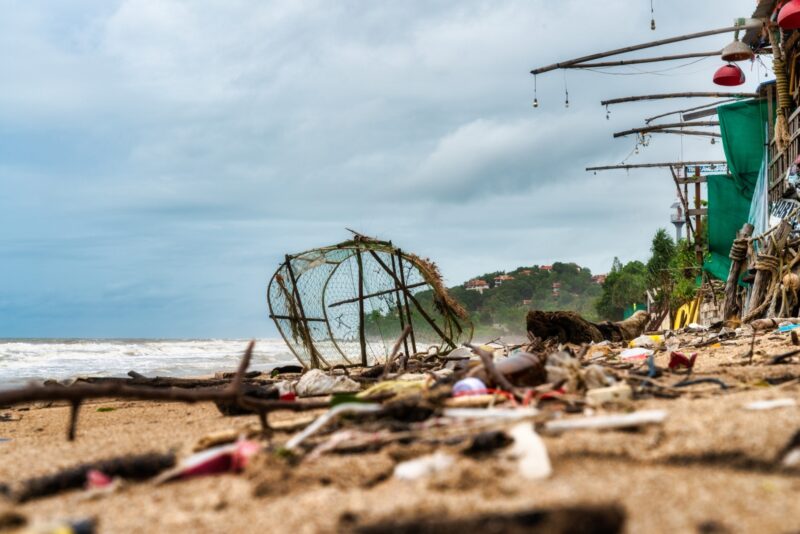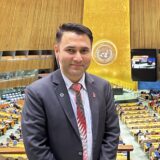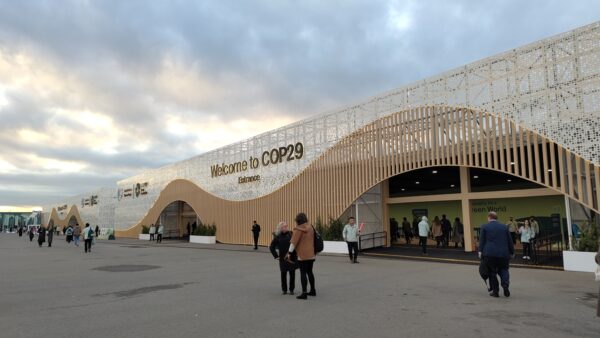Four things to know from the first workshop on the loss and damage fund
The Transitional Committee held its first workshop on how to set up the new loss and damage fund — here’s our take on the key funding gaps and solutions that emerged at the meeting.
Share

In recent weeks, the body charged with setting up the new loss and damage fund – the Transitional Committee – held its first mandated workshop in Bonn, Germany to gather inputs on how the fund and new funding arrangements should operate.
Here’s our take on the key funding gaps and solutions that emerged at the workshop.
1. Developing countries are already spending large sums related to loss and damage, and costs are rising
The latest IPCC reports shows loss and damage is already affecting every region of the world – yet the worst consequences will be felt by those most vulnerable and least responsible for climate change. A Christian Aid report finds that such countries, including the least developed group and small islands states, could see around a fifth of their GDP wiped out by climate change by 2050.
Unsurprisingly, these countries want the new fund to put in place an effective, fair and sustainable system of financial support to deal with climate disasters and permanent losses. In the absence of this, many are already spending large sums of their national budgets on what could be classed as loss and damage.
Morocco, which has seen a five-fold increase in the frequency of dry agricultural seasons, has disbursed $1 billion in public funds to respond to the loss of over 60% of some crops and several thousand jobs in 2021/22 alone.
Following hurricanes Eta and Iota in 2022, Honduras spent nearly $125 million from its national budget on recovery efforts. Diverting money that could have been spent on development means countries get “caught in a perverse cycle of dependence,” said Elena Pereira from the Honduran government at the meeting.
Many governments are also taking out contingency measures like insurance. In its short ten-year history, the African Risk Capacity has paid out $167 million, while the Caribbean Climate Risk Insurance Facility has dispersed $250 million since 2007.
The payouts from such schemes cover only a fraction of losses. For a sense of proportion, the estimated damages caused by Hurricane Dorian in the Bahamas was $2.5 billion, while the CCRIF payout was just $12.8 million – around half a percent.
Although insurance premiums are often subsidised, affordability continues to act as a barrier for developing countries. “As we speak, the reinsurance [sector] are asking for significant increases in their rates, as much as 20% to 25%, or even more,” said Isaac Anthony of CCRIF at the workshop.
2. There’s no clear plan for how to recognise the key issue of non-economic losses like culture and identity
Non-economic losses, such as the loss of cultural heritage, knowledge and identity, are understandably of huge concern to those affected. Although they’ve been discussed under the UNFCCC for over a decade, there is a sense among vulnerable groups and countries, including Vanuatu, that such losses continue to be undervalued. Some Pacific Island States such as Samoa have attempted to capture non-economic losses in the aftermath of climate disaster.
The melting of glaciers in the Himalayan region has had far-reaching effects, including disruption to livelihoods, loss of access to freshwater, destruction of cultural monuments, and a significant increase in recorded fatalities.
To date little thought has been given to how to reflect non-economic losses in the new funding arrangements and the fund. Possible avenues include mandatory safeguards in each funded activity, tailored rules for decision-making, funding discrete activities to address non-economic losses, and specific requirements for monitoring and evaluation.
3. More money for immediate response and a new system for long-term recovery finance is needed
In the direct aftermath of climate disasters, some limited support is available to developing countries. The Asian Development Bank, for example, provides grants of up to $3 million, with a declaration of emergency considered a soft trigger for fund disbursement, while regional risk pools use hard triggers like physical thresholds.
Despite such provisions, there is a glaring funding gap of $25 billion for humanitarian interventions, including immediate response to climate hazards. Funding needs have skyrocketed 461% over the last decade and climate-related disasters have tripled since 2012 compared to the 1980s.
Longer-term recovery after an event can take months to years. The cost of this alone in the case of the Pakistan floods was estimated to be $16.2 billion (on top of $30 billion in damages). Climate change made the devastating heatwave that precipitated the flood 30 times more likely and the extreme rainfall 50% more intense.
As things stand, there’s no financing system in place to pay for rebuilding efforts or to respond to slow onset events like sea level rise. Although some grants exist for intermediate needs (the ADB’s Emergency Assistance Projects, for example), most support comes in the form of loans for specific development projects.
4. Future Committee meetings should consider progressive climate impacts, timescales and finance triggers
As the Transitional Committee prepares for its second meeting at the end of May, it mustn’t lose sight of the key message that has emerged from this workshop – that climate change is already leaving its marks on the reach and availability of existing approaches to address loss and damage.
The $25 billion funding gap mentioned above is just a prelude. Climate change is fundamentally reshaping the risk landscape – once rare high-intensity extreme events are becoming commonplace. This means the loss and damage bill is set to rise pretty much year on year as the world warms.
There is also broad consensus that current debt-based financing solutions are unsustainable. The new funding arrangements and fund must be designed with the scale of climate-induced changes in mind and should expand the landscape of grants currently available.
The fund should also distinguish between different categories of response, as they vary greatly in terms of cost. Economic loss and damage is distinct from emergency response (usually in the millions), which in turn is distinct from recovery and rehabilitation (which tends to be in the billions).
The different response categories also come with different disbursement needs. Rapid disbursement is needed for immediate action. While triggers can achieve this, they rely on data that is often scarce in developing countries. Soft triggers should therefore be considered in the absence of data.
In contrast, intermediate or long-term recovery does not have to rely on rapid disbursement. Instead, other financing criteria could be developed that do not place additional data burden on developing countries but still allow for effective and efficient responses. The same holds for responses to permanent loss caused by irreversible climate change.
Just before the workshop, a new analysis fully attributed the agricultural drought in the Horn of Africa to climate change causing low rainfall and high temperatures. Attribution research has not yet been on the agenda of the Transitional Committee, and given its political implications, it might not make it there any time soon. Nonetheless, the rationale for international burden sharing of response and recovery costs is clearly supported by science. Committee members have a historic opportunity to put that in place.













